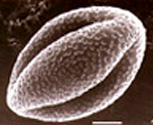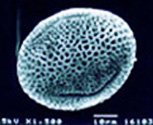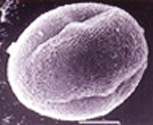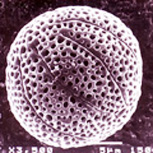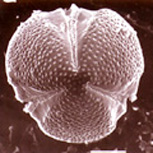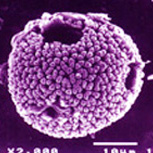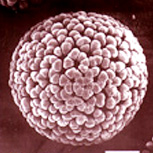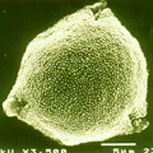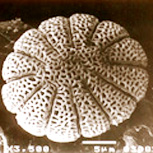|
การศึกษาสัณฐานวิทยาของเรณูพืชวงศ์เปล้า (Euphorbiaceae) ในประเทศไทย โกสุม พีระมาน ชุมพล คุณวาสี กัญดา เกษตรสินสมบัติ และ รัฐพงษ์ พวงทับทิม
บทคัดย่อ ละอองเรณูของพืชวงศ์เปล้าที่พบในประเทศไทยทั้งจากตัวอย่างสดและตัวอย่างพันธุ์ไม้แห้งจำนวน 68 สกุล 216 ชนิดถูกนำมาผ่านกระบวนการอะซีโตไลซิส เพื่อศึกษาลักษณะสัณฐานของเรณูด้วยกล้องจุลทรรศน์แบบใช้แสง และกล้องจุลทรรศน์อิเลคตรอนแบบส่องกราด การวัดขนาดของส่วนต่างๆ และการศึกษาลักษณะสัณฐานของละอองเรณู ศึกษาจากเรณูอย่างน้อย 10 ละอองเรณูในตัวอย่างพืชแต่ละชนิด ด้วยกล้องจุลทรรศน์ Nikon AFX 35 การศึกษาลักษณะภายนอกของเรณูอย่างละเอียดพร้อมภาพถ่ายใช้กล้องจุลทรรศน์อิเลคตรอนแบบส่องกราด J ผลการศึกษาพบว่าเรณูของพืชวงศ์เปล้ามีความหลากหลายสูงทั้งลักษณะของช่องเปิดและลวดลายของผนังเรณู ซึ่งนำมาใช้ในการจัดกลุ่มเรณูได้ถึง 61 รูปแบบ ลักษณะสัณฐานวิทยาของเรณูมีแนวโน้มที่สามารถนำมาใช้เป็นลักษณะในการจัดจำแนกพืชวงศ์นี้ได้ในหลายระดับ แม้แต่ในระดับชนิด
|
||||||||||||||||||||||||
|
||||||||||||||||||||||||
|
กลับสู่หน้าแรกหน่วยปฏิบัติการฯ
|
||||||||||||||||||||||||
|
Palynological study of Euphorbiaceae in Thailand Kosum Pyramarn, Chumpol Khunwasi, Kunda Kasetsinsombat and Rattapong Puangtaptim
ABSTRACT Pollen materials obtained from fresh and herbarium specimens of 68 genera and 216 euphorbiaceous species found in Thailand were acetolysed. Measurements and morphological observations were made under a Nikon AFX 35, using x10 eyepieces and a x100 immersion objective. All measurements were based on at least 10 pollen grains. External ultrastructures of pollen grains were observed by scanning electron microscope. The SEM micrographs were taken using a EOL JSM 5410 LV. A conspicuous morphological diversity of euphorbiaceous pollen is evident from 61 pollen types, which are established and described in the present study. This diversity is mainly based on the various types of apertural system and ornamentation. Pollen morphology has potential to be used to identify different taxonomic ranks in this family, even to species level.
|
||||||||||||||||||||||||
|
|
